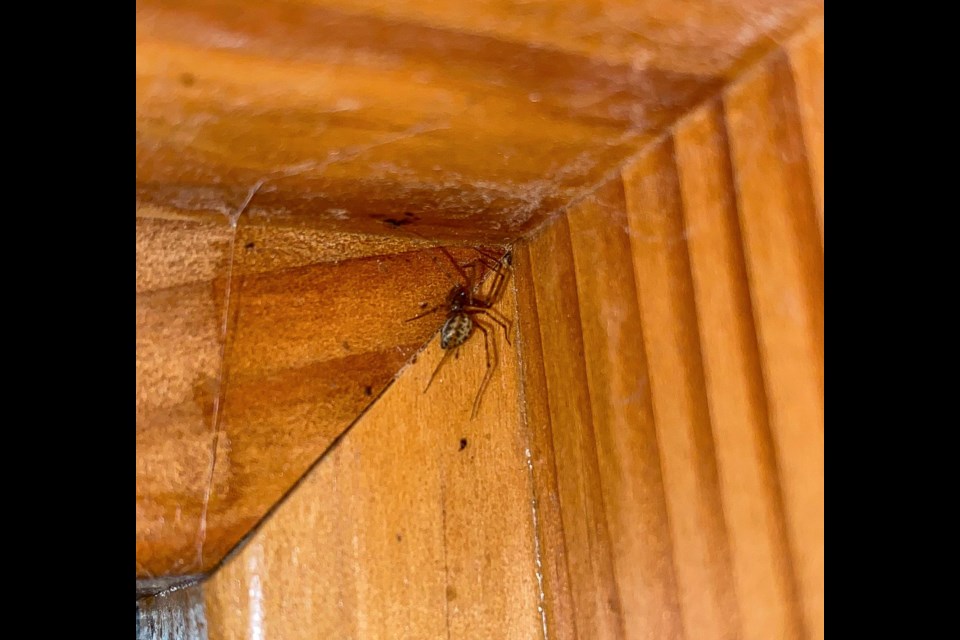When we think about animals that can be seen during the winter in Alberta, most folks probably think of deer, coyotes, and songbirds. But what about bugs? Winter is a time of reprieve from the summer swarms of mosquitoes and ants, but contrary to what you might think, many types of creepy-crawlies are able to tough it out in the winter one way or another.
Here, the word ‘bug’ means ‘insects, spiders, millipedes, and other multi-legged invertebrates. In the world of entomology, ‘bug’ refers to the insect order Hemiptera, but so many people use it to casually describe any old arthropod that we can too, without guilt.
Like it is for other animals, the changing of seasons means bugs often need to change survival strategies to make it through the harsher times. Many take shelter under fallen leaves, in old rotten logs, or underneath the snow. While these might not sound comfy to us, a good layer of snow acts as an insulator-- slightly warmer for hibernating insects than in the open air. Some insects even pass the winter in their egg or pupal forms.
On warm, sunny days, bugs that shelter beneath the snow will often crawl to the surface to enjoy the mild weather. Little black snow fleas (which aren’t true fleas) can be seen during times like this, and even some butterflies that hibernate through winter will emerge and fly around when the weather is nice.
Many other species take shelter in homes, sheds, and other such structures. Any quiet corner will suit a variety of critters just fine: basements are especially popular. While many folks aren’t thrilled with the idea of bugs sharing their houses, the vast majority of species are harmless and happy to go unnoticed by us. Short of completely sterilizing your house, there’s not much you can do to get rid of things like the tiny larder beetle, for example. Spiders will help deal with such unwanted insect roommates.
Some entomologists, scientists who study bugs, are interested in knowing more about what kind of bugs are around during the winter in Alberta. To that end, the Winter Bug Count was started in 2011 to keep a year-to-year record of what’s seen from December through February. It’s a project anyone with an interest in bugs can become a citizen scientist to help out with. On the iNaturalist app, you can create an account, join the Winter Bug Count project, and submit sightings of insects, spiders, and other such critters in Alberta.
The project’s founder, University of Alberta lecturer John Acorn, has some tips for beginners on where to start looking for winter bugs. “Outdoors, the warmer the day the better, on snow near wetlands," said Acorn. “Indoors, basements and warm, moist places like furnace rooms, bathrooms, and anywhere with potted plants are best."
Looking around in your own home is an easy way to get started. What are some of the more common bugs to keep an eye out for? “Spiders-- including running crab spiders, boreal cobweb spiders, and funnel barn weavers," said Acorn. “Also, fungus gnats from potted plants and larder or carpet beetles--because every building has some."
There are exciting surprises that pop up from time to time, so it’s worth documenting every bug you see, even if it might look insignificant at first. “A few years back someone found an ant species that was new for the province. In fact, the entire subfamily, Ponerinae, was new to Alberta,” said Acorn.
For those interested in the small things in nature it’s good to know bug-hunting season doesn’t have to be restricted to the warmer months. The Winter Bug Count will be going strong for years to come, so keep an eye out! The project is a fun and easy way to be a part of something big, even when looking for things that are small.
Nick Carter is a writer, photographer and naturalist from Edmonton. See more at naturenickphotography.com



